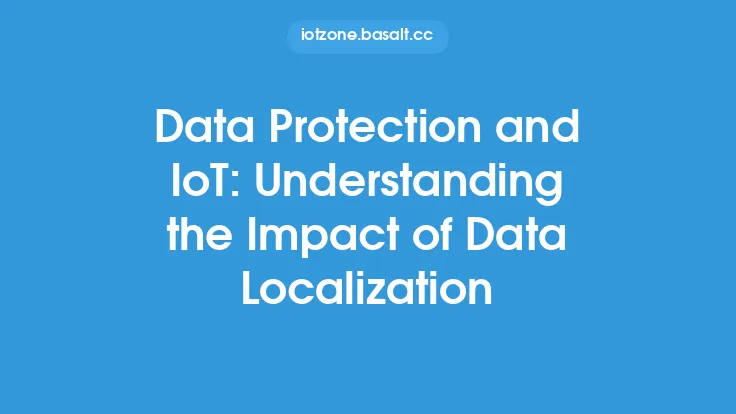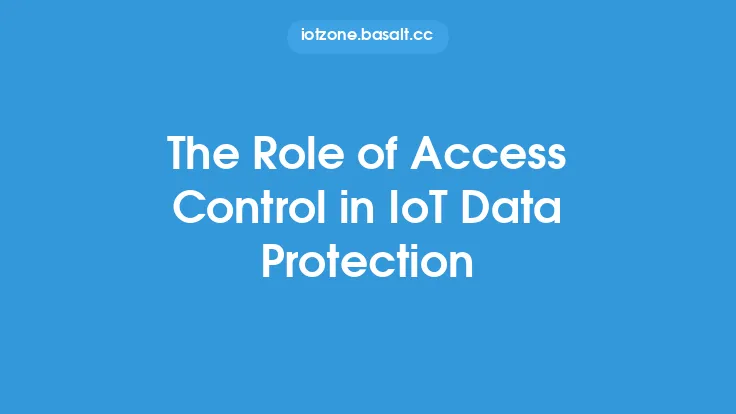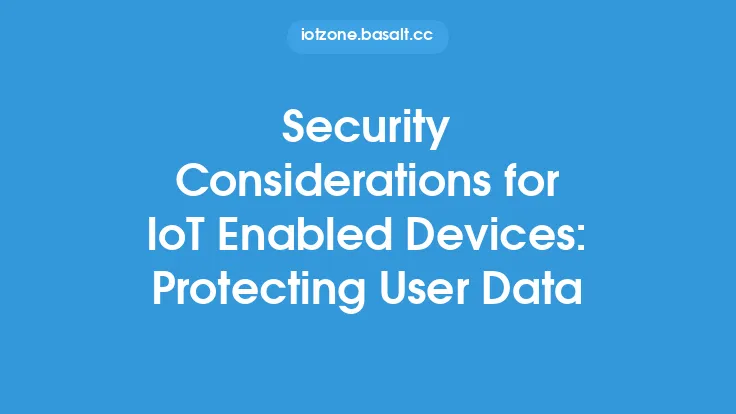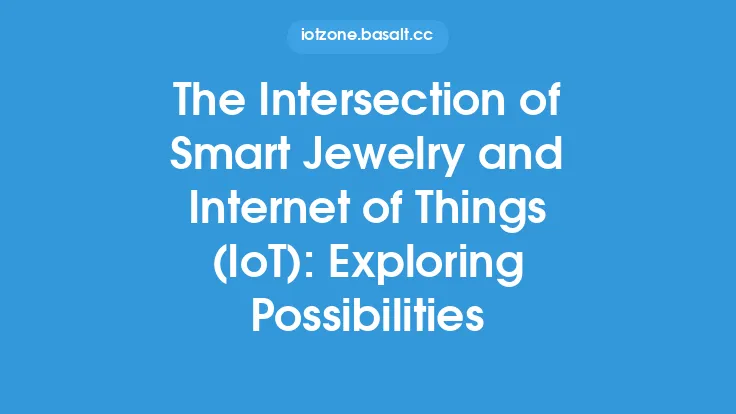The Internet of Things (IoT) has revolutionized the way we live and work, with an estimated 41.4 billion connected devices expected to be in use by 2025. As the number of IoT devices continues to grow, so does the amount of data they generate, collect, and transmit. This has significant implications for data protection, as manufacturers must ensure that the data collected and processed by their devices is handled in a secure and responsible manner. In this article, we will explore the key considerations for manufacturers at the intersection of data protection and IoT.
Introduction to IoT Data Protection
IoT devices often collect and transmit sensitive data, including personal identifiable information (PII), location data, and other sensitive information. This data can be used to infer sensitive information about individuals, such as their daily routines, health, and financial information. As a result, manufacturers must prioritize data protection and implement robust security measures to prevent unauthorized access, use, or disclosure of this data. This includes implementing encryption, secure authentication and authorization mechanisms, and regular software updates to patch vulnerabilities.
Key Data Protection Considerations for Manufacturers
Manufacturers must consider several key factors when designing and developing IoT devices to ensure that they prioritize data protection. These include:
- Data minimization: Manufacturers should only collect and process the minimum amount of data necessary to achieve the intended purpose of the device. This reduces the risk of data breaches and minimizes the amount of sensitive data that is stored or transmitted.
- Data storage and transmission: Manufacturers should ensure that data is stored and transmitted securely, using encryption and secure communication protocols such as HTTPS or CoAP.
- Device security: Manufacturers should implement robust security measures to prevent unauthorized access to the device, including secure authentication and authorization mechanisms, and regular software updates to patch vulnerabilities.
- Data subject rights: Manufacturers must ensure that they comply with data subject rights, including the right to access, rectify, and erase personal data.
Technical Considerations for IoT Data Protection
From a technical perspective, manufacturers must consider several key factors when designing and developing IoT devices to ensure that they prioritize data protection. These include:
- Encryption: Manufacturers should use end-to-end encryption to protect data in transit and at rest. This includes using secure communication protocols such as HTTPS or CoAP, and encrypting data stored on the device using techniques such as AES or RSA.
- Secure boot mechanisms: Manufacturers should implement secure boot mechanisms to ensure that the device boots up with authorized software and firmware.
- Secure firmware updates: Manufacturers should implement secure firmware update mechanisms to ensure that updates are authenticated and authorized before being applied to the device.
- Intrusion detection and prevention systems: Manufacturers should consider implementing intrusion detection and prevention systems to detect and prevent unauthorized access to the device.
Regulatory Considerations for IoT Data Protection
Manufacturers must also comply with relevant regulations and standards when designing and developing IoT devices. These include:
- General Data Protection Regulation (GDPR): Manufacturers must comply with the GDPR when collecting and processing personal data of EU residents.
- California Consumer Privacy Act (CCPA): Manufacturers must comply with the CCPA when collecting and processing personal data of California residents.
- National Institute of Standards and Technology (NIST) Cybersecurity Framework: Manufacturers should consider implementing the NIST Cybersecurity Framework to ensure that they prioritize data protection and cybersecurity.
Best Practices for IoT Data Protection
To prioritize data protection, manufacturers should follow best practices when designing and developing IoT devices. These include:
- Conducting regular security audits and risk assessments: Manufacturers should conduct regular security audits and risk assessments to identify vulnerabilities and prioritize remediation efforts.
- Implementing secure development lifecycle practices: Manufacturers should implement secure development lifecycle practices, including secure coding practices, code reviews, and testing.
- Providing transparency and notice to users: Manufacturers should provide transparency and notice to users about the data that is being collected and processed, and how it will be used.
- Providing user controls and preferences: Manufacturers should provide user controls and preferences to allow users to manage their data and make informed decisions about how it is used.
Conclusion
In conclusion, the intersection of data protection and IoT is a critical consideration for manufacturers. By prioritizing data protection and implementing robust security measures, manufacturers can ensure that the data collected and processed by their devices is handled in a secure and responsible manner. This includes implementing encryption, secure authentication and authorization mechanisms, and regular software updates to patch vulnerabilities. By following best practices and complying with relevant regulations and standards, manufacturers can build trust with their users and ensure the long-term success of their IoT devices.





